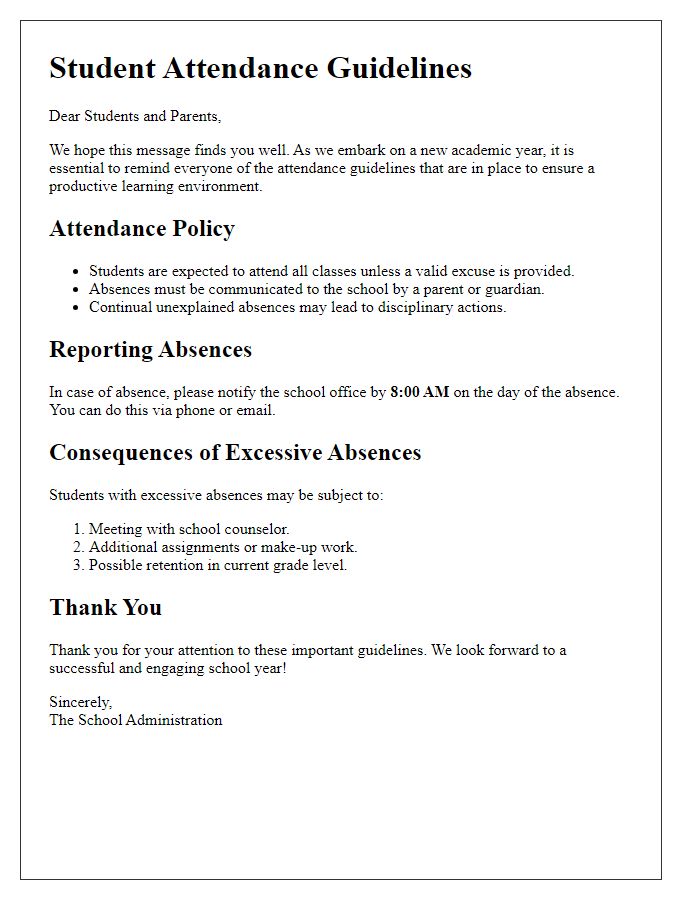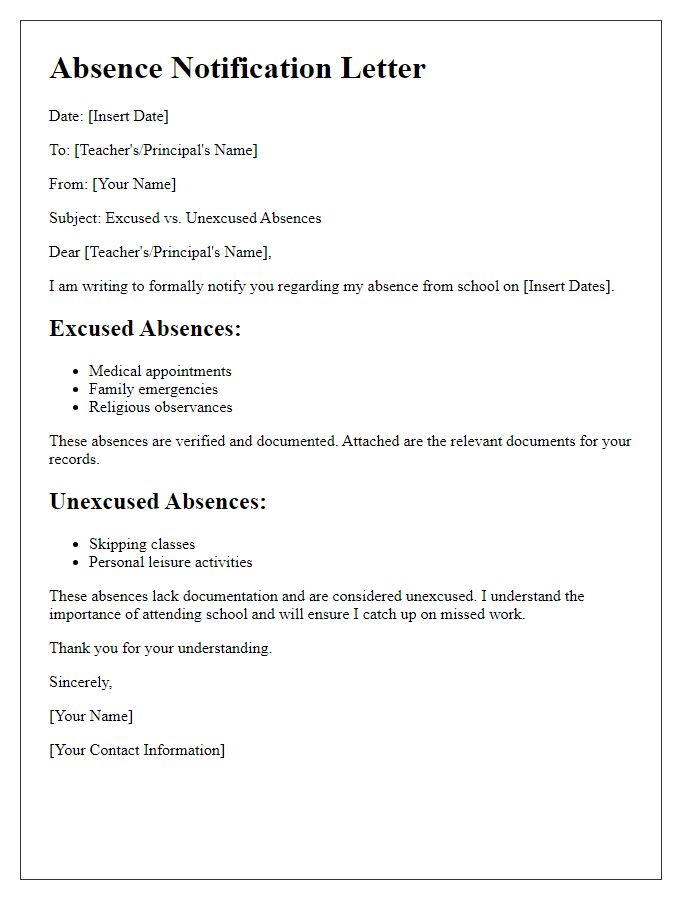Welcome to our guide on crafting an effective student attendance policy letter! We understand that attendance plays a crucial role in a student's academic success, and it's important to communicate expectations clearly. In this article, we'll share tips on how to structure your letter, what key points to include, and how to foster a positive dialogue with parents and students. So, let's dive in and explore best practices for creating a comprehensive attendance policy that everyone can understand!

Purpose of the policy
The student attendance policy aims to establish clear guidelines for attendance monitoring in educational institutions, promoting academic success and engagement. Regular attendance is crucial for students to comprehend course material effectively, participate in classroom activities, and ultimately achieve higher grades. Excessive absences can hinder a student's learning process and disrupt the overall classroom environment, impacting both peers and educators. By emphasizing the significance of attendance, this policy seeks to foster responsibility and accountability among students, encouraging them to prioritize their education. This framework also outlines the procedures for reporting absences and the consequences for non-compliance, ensuring that all students understand the expectations and resources available to them for maintaining consistent attendance.
Definition of attendance criteria
Student attendance criteria are vital for ensuring academic success and active participation in the educational process. Regular attendance is defined as being present for at least 90% of scheduled classes within an academic term, which typically spans approximately 16 weeks. Excused absences may include documented medical emergencies, family emergencies, or school-related activities, while unexcused absences refer to missed classes without valid reasons. Schools often implement policies that require students to notify instructors about any absences within a specified timeframe, usually 24 hours. Furthermore, excessive absences, commonly defined as more than three unexcused instances within a grading period, may result in academic penalties or reduced course participation grades.
Explanation of excused and unexcused absences
Student attendance policies detail the expectations regarding student presence in educational settings. Excused absences, often defined by educational institutions, typically include instances such as illness, family emergencies, or religious observances. Documentation, such as a doctor's note or a signed letter from a parent, often validates these reasons. Unexcused absences, conversely, occur when a student misses class without a valid reason or without prior approval from school administration; this can include activities like skipping school or tardiness without notification. Schools maintain specific protocols to address unexcused absences, which may involve meetings with parents, academic penalties, or additional work assignments, fostering accountability and engagement in academic learning.
Communication procedures for reporting absences
Clear communication procedures for reporting absences are essential within academic institutions, particularly for students enrolled in high school or college. Students or parents must notify attendance offices promptly, ideally within 24 hours of absence, through designated channels, such as email or phone calls. Each school, such as Lincoln High School or Riverside Community College, typically provides specific contact information, including attendance office phone numbers (e.g., 555-1234) and email addresses (e.g., attendance@school.org). It is important to submit a written explanation, detailing the reason for absence, which may include illness, family emergency, or educational activities, along with any necessary documentation, such as doctor's notes for medical-related absences. Adhering to these procedures fosters accountability and ensures accurate attendance records.
Consequences of non-compliance
Frequent absences can lead to significant consequences for students. Schools often implement attendance policies to ensure that learners are present for educational activities. Non-compliance with these policies may result in academic penalties, such as reduced grades or mandatory after-school sessions to catch up on missed material. Additionally, excessive unexcused absences can trigger disciplinary actions, including meetings with school counselors or parental notifications. In extreme cases, schools may consider placing students on probation or even initiating a referral to a truancy officer, especially if absences threaten the student's eligibility for promotion to the next grade level. These measures are aimed at fostering accountability and emphasizing the importance of consistent attendance for academic success.












Comments